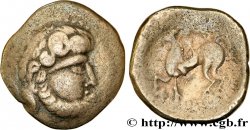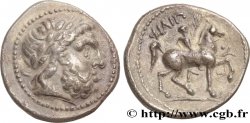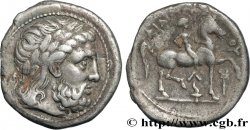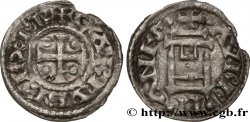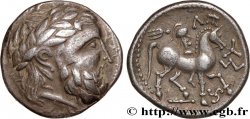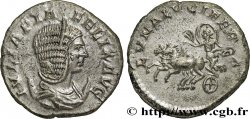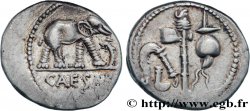Live auction - bga_686864 - DANUBIAN CELTS - IMITATIONS OF THE TETRADRACHMS OF PHILIP II AND HIS SUCCESSORS Tétradrachme au cavalier, imitation de Philippe II
You must signin and be an approved bidder to bid, LOGIN TO BID. Accounts are subject to approval and the approval process takes place within 48 hours. Do not wait until the day a sale closes to register. Clicking on "BID" constitutes acceptance of the terms of use of cgb.fr private live auctions.
Bids must be placed in whole Euro amounts only. The sale will start closing at the time stated on the item description; any bids received at the site after the closing time will not be executed. Transmission times may vary and bids could be rejected if you wait until the last second. For further information check the Live auction FAQ
All winning bids are subject to a 18% buyer’s fee.
All winning bids are subject to a 18% buyer’s fee.
| Estimate : | 950 € |
| Price : | 750 € |
| Maximum bid : | 750 € |
| End of the sale : | 06 December 2022 15:57:35 |
| bidders : | 2 bidders |
Type : Tétradrachme au cavalier, imitation de Philippe II
Date: c. 300-250
Metal : silver
Diameter : 23 mm
Orientation dies : 12 h.
Weight : 14,44 g.
Slab

NGC :
Coments on the condition:
Exemplaire de qualité exceptionnelle pour ce type monétaire. Belle tête de Zeus légèrement stylisée. Frappe un peu molle au revers, stylisée aussi. Marque de démonétisation au revers. Patine de collection ancienne avec des reflets dorés et bleutés acier
Catalogue references :
Predigree :
Cet exemplaire provient du stock de J.-B. Vigne du 23 avril 1985. Exemplaire sous coque NGC AU (Strike 5/5, Surface 2/5)
Obverse
Obverse legend : ANÉPIGRAPHE.
Obverse description : Tête laurée de Zeus à droite.
Reverse
Reverse description : Cavalier au pas à droite, tenant une palme de la main droite ; le cheval lève l'antérieur à droit ; sous le cheval, entre les pattes, un dauphin faisant penser à un aplustre (asphlaton).
Reverse legend : FILIP-P.U/ G°
Reverse translation : (de Philippe/ Go).
Commentary
Imitation précoce. Tête de Zeus légèrement stylisée, en particulier au niveau de l’œil. L’omicron de Philippoy au revers est figuré par un globule. Marque de vérification sur le cheval. Le symbole sous le cheval est particulier, stylisé. L’ensemble pourrait nous laisser à penser à une imitation celtique primaire. Mêmes coins que l’exemplaire CNG, Triton V, 15 janvier 2002, n° 1006.







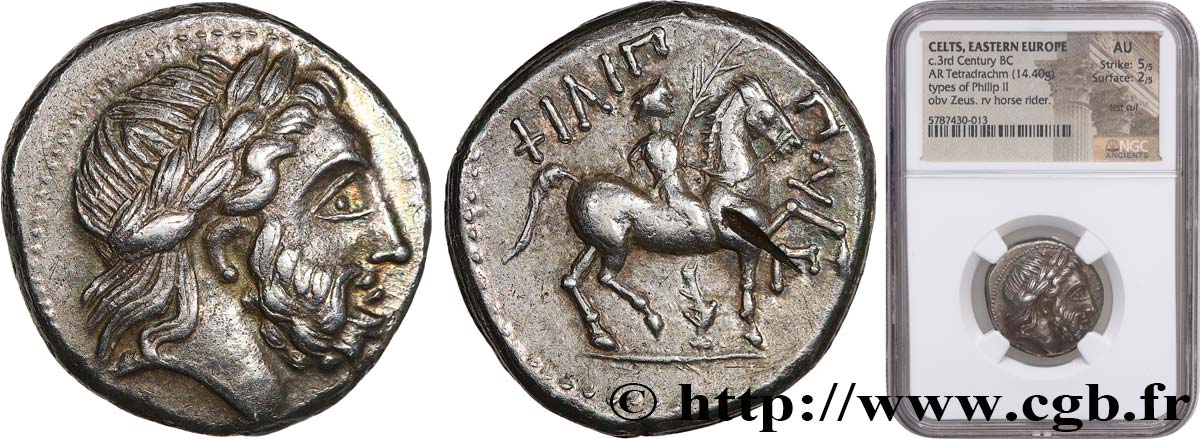
 Report a mistake
Report a mistake Print the page
Print the page Share my selection
Share my selection Ask a question
Ask a question Consign / sell
Consign / sell
 Full data
Full data